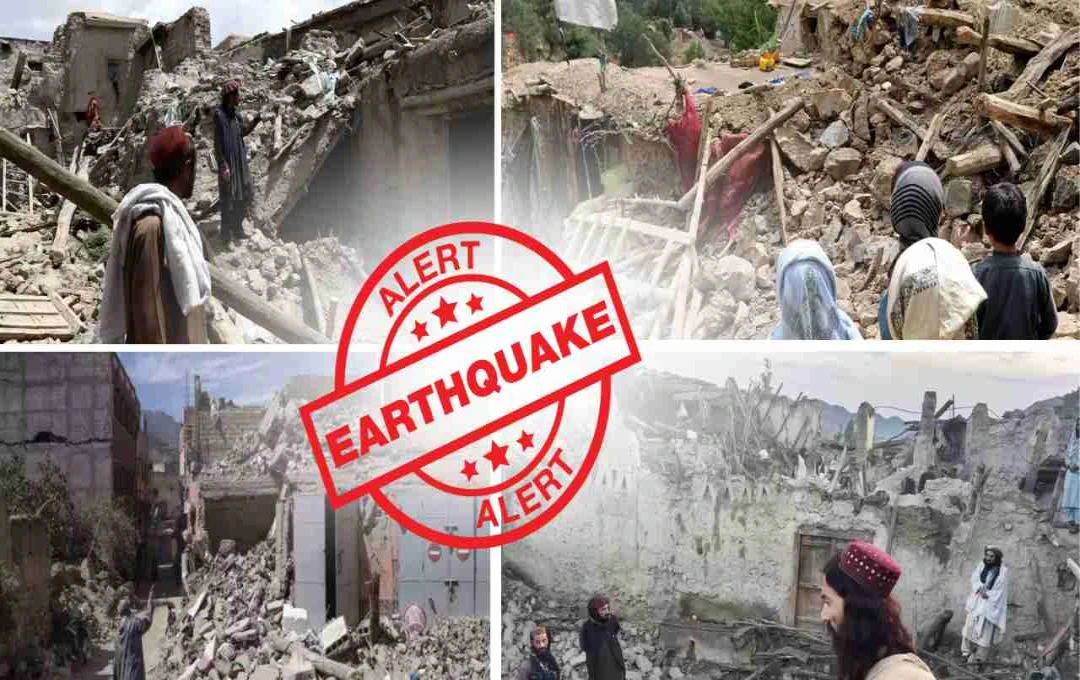A 6.0 magnitude earthquake in Nangarhar, Afghanistan on September 1st resulted in 622 deaths and over 1000 injuries. The Taliban government and international agencies have initiated relief efforts.
Afghanistan Earthquake: The 6.0 magnitude earthquake that struck Afghanistan's eastern Nangarhar province on the night of September 1, 2025, caused widespread devastation. Occurring at 11:47 PM, the tremor claimed hundreds of lives and toppled thousands of homes within minutes. According to the German Research Centre for Geosciences (GFZ) and the U.S. Geological Survey (USGS), the epicenter of the earthquake was located 27 kilometers from Jalalabad city at a shallow depth of just 10 kilometers.
Due to the shallow depth, the seismic waves had a significant impact on the surface, leading to such extensive loss of life and property. Reports indicate that 622 people have died so far, with over 1000 injured. Hospitals are treating the injured, while rescue teams are working to extricate people trapped under the debris.
Epicenter and Magnitude: Why the Damage Increased

Both GFZ and USGS reported the earthquake's magnitude as 6.0, which is considered moderate on the Richter scale. However, the shallow depth of only 10 kilometers made its impact on the surface direct and hazardous. Shallow earthquakes typically cause more destruction because the seismic shock is felt more intensely and rapidly on the ground. This is precisely why this earthquake resulted in such significant devastation. Furthermore, two more tremors occurred within 20 minutes—the first with a magnitude of 4.5 and the second with 5.2. These consecutive shocks instilled panic among residents, and many stayed outdoors throughout the night.
Deaths and Injuries: Jalalabad Most Affected
According to Ajmal Darwaish, spokesperson for the Nangarhar Health Department, most of the deaths occurred in Jalalabad and its surrounding villages. People were asleep when their mud-brick houses collapsed, trapping them. Many areas experienced road damage, disruptions to communication networks, and power outages, which hampered relief efforts. Tremors were also felt in some areas near the Pakistan border, but there was no loss of life or property there. Rescue teams are facing difficulties reaching villages due to damaged roads and bridges.
Taliban Government's Relief Operation
Following the earthquake, the Taliban government immediately launched rescue and relief operations. The army, medical teams, and rescue squads have been dispatched to the affected areas. However, the challenging terrain of provinces like Nangarhar and Kunar, coupled with damaged roads, is causing delays in relief work. The United Nations (UN) and other international organizations have also offered assistance. Medical supplies, temporary shelters, and food and water are being sent, but the scale of destruction is so vast that it may take time to organize everything effectively.

The 2023 Earthquake: When Over 1500 Lives Were Lost
This earthquake also brought back painful memories of 2023, when a 6.3 magnitude earthquake claimed over 1500 lives in Afghanistan. International aid played a crucial role in the relief efforts then as well. While the death toll may be slightly lower this time, the impact of the devastation is deep-rooted and could affect people's lives for months to come.
Why Does Afghanistan Experience Frequent Earthquakes?
Afghanistan is situated in the Hindu Kush mountain range, an active zone of tectonic plate collision. The Indian Plate collides with the Eurasian Plate at a rate of 39 millimeters annually. Consequently, this region falls within an earthquake-prone zone. Data indicates that over the past 10 years, there have been 10 major earthquakes with magnitudes of 6.0 or higher within a 300-kilometer radius. The 2015 earthquake, with a magnitude of 7.5, was the deadliest, resulting in thousands of fatalities.












